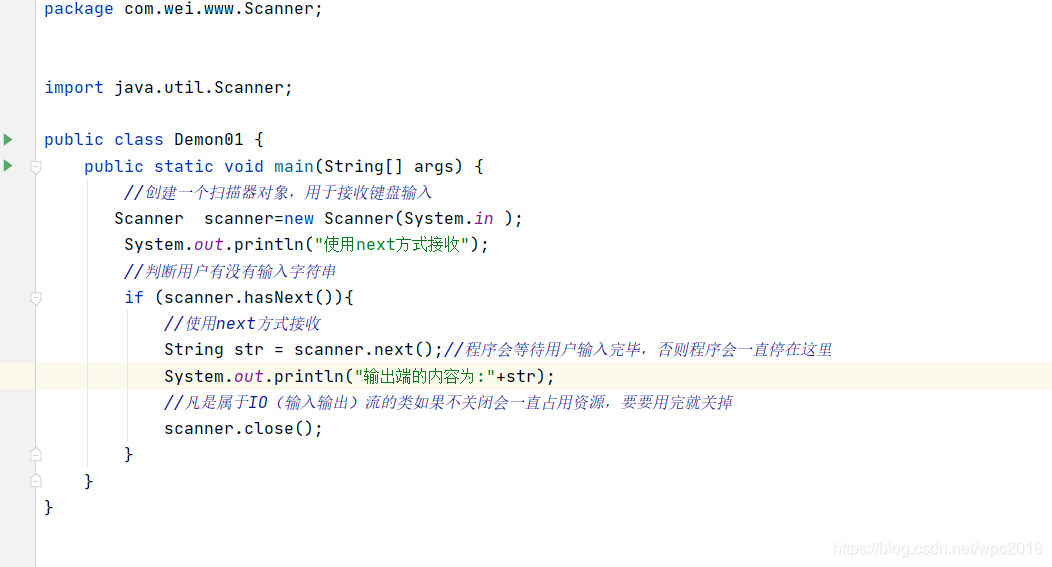JAVA流程控制01——用户交互Scanner和scanner的进阶使用
本文共 506 字,大约阅读时间需要 1 分钟。
JAVA流程控制——用户交互Scanner和scanner的进阶使用
Scanner对象
通过Scanner类的next()与nextLine()获取输入的字符串,在读取前我们一般需要使用hasNext()与hasNextLine()判断是否还有输入的数据
next()与nextLine()的区别
next():
- 一定要读取到有效字符才可以结束输入
- 对输入有效字符之前遇到的空白,next()方法会自动将其去掉
- 只有输入有效字符后才将其后面输入的空白作为分隔符或者结束符
- next()不能得到带有空格的字符串


nextLine():
- 以Enter为结束符,也就是说nextLine()放发返回的是输入回车
之前的所有字符
- 可以获得空白


注意:凡是属于IO(输入输出)流的类如果不关闭会一直占用资源,要要用完就关掉。列如scanner类,使用完后要关闭scanner.close();
拓展:不加判断直接使用scanner类来获取输入的字符

Scanner的进阶使用
输入一个数,判断输入的是整数还是小数

我们可以输入多个数字,并且求其总和与平均数,每输入一个数字用回车确认,通过输入非数字来结束并输出执行结果:

转载地址:http://oqov.baihongyu.com/
你可能感兴趣的文章
Node.js Web 模块的各种用法和常见场景
查看>>
Node.js 之 log4js 完全讲解
查看>>
Node.js 函数是什么样的?
查看>>
Node.js 函数计算如何突破启动瓶颈,优化启动速度
查看>>
Node.js 切近实战(七) 之Excel在线(文件&文件组)
查看>>
node.js 初体验
查看>>
Node.js 历史
查看>>
Node.js 在个推的微服务实践:基于容器的一站式命令行工具链
查看>>
Node.js 实现类似于.php,.jsp的服务器页面技术,自动路由
查看>>
Node.js 异步模式浅析
查看>>
node.js 怎么新建一个站点端口
查看>>
Node.js 文件系统的各种用法和常见场景
查看>>
Node.js 模块系统的原理、使用方式和一些常见的应用场景
查看>>
Node.js 的事件循环(Event Loop)详解
查看>>
node.js 简易聊天室
查看>>
Node.js 线程你理解的可能是错的
查看>>
Node.js 调用微信公众号 API 添加自定义菜单报错的解决方法
查看>>
node.js 配置首页打开页面
查看>>
node.js+react写的一个登录注册 demo测试
查看>>
Node.js中环境变量process.env详解
查看>>